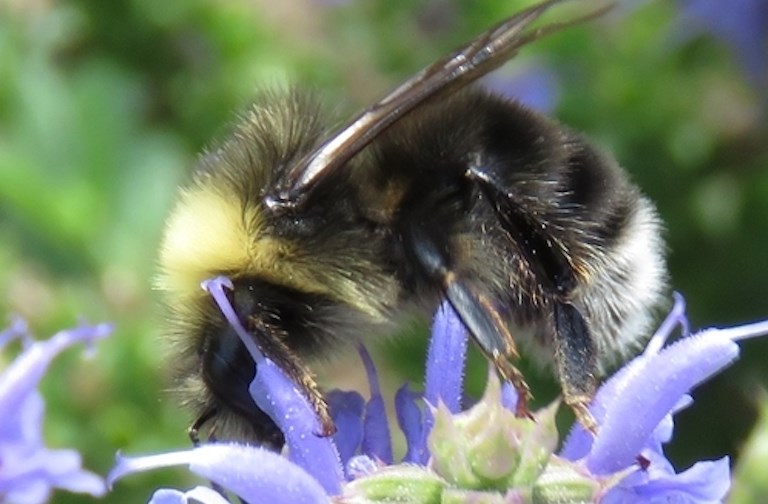What do the yellow-banded bumble bee, western bumble bee, Suckley cuckoo bumble bee, and yellow bumble bee all have in common?
For one, their all part of the subgenus Bombus, making them closer relatives than some of the other 800 odd bee species in Canada. They can all found be found in Alberta. And sadly, all are in decline, and each can also be found on the Red List of Threatened Species, released by the International Union for Conservation of Nature.
Times are tough for native bees the world over. Climate and land use changes continue to shrink their range. Intensive pesticide use, parasites, and disease are all stressors driving decline.
The relative abundance of all native bees in Alberta isn't falling at the same pace, however. In fact, some seem to be stable or even increasing. What links the most vulnerable is their use as agricultural animals, and the spread of pathogens that occur because of their unregulated use as livestock.
"We think happened was a pathogen spillover, perhaps from domesticated bumblebees," said Megan Evans, president of the Alberta Native Bee Council. "For years we used the western bumblebee as a greenhouse pollinator. And we think that there's a pathogen spillover effect that has more greatly impacted bumblebees," such as the western and yellow-banded bumble bee.
Bumble bees are used to pollinate 25 different crops in Canada. The vast majority of domesticated bumble bees, 95 per cent, can be found in greenhouses pollinating tomatoes and peppers. Mites, fungi, bacteria, and viruses harmful to bees spread more easily in the concentrated, captive populations. And because most "captive" bees in greenhouses travel and forage in the surrounding area, those pathogens are transmitted to nearby native pollinators.
Two species of native bee can be used to show the spillover effect. Both the Suckley cuckoo and the Macropis cuckoo are parasitic bees, they invade the nests of other bee species to reproduce and raise their young. These species seem to prefer to parasitize western and yellow-banded bumble bees, Evans said, and now their populations are also in decline.
The Macropis cuckoo is so rare that only four individuals have been collected in the last 50 years in Canada, including from Elk Island National Park east of Edmonton.
"This has to do with like a pathogen that came through domesticated bumblebees, which I think is a very important cautionary tale to tell to the public. Most of the public probably isn't aware that we use bumble bees, or domesticated bumblebees, for greenhouse pollination."
The western bumble bee used to be the most common bumble bee in Western Canada, and was reared for use in greenhouses, Evans said. Over the last 20 or 30 years, it has become one of the most rare, and now greenhouses have taken to importing non-native species from eastern provinces, risking the introduction of invasive species into Alberta.
Sheila R. Colla and Rachel Nalepa from York University's Native Pollnator Research Lab published a document in 2023 outlining a national strategy for protecting Canada's wild pollinators. Reducing pathogens in managed populations and limiting spillover between managed and wild populations are two of the main recommendations, and the path to achieving this could be fairly straight forward: regulate all livestock species the way we already do honey bees.
The Canadian Food Inspection Agency is tasked with trying to control disease spread among honey bees, and permits are required to import queens or colonies from other countries, a common practice among beekeepers.
Other species of bees, and even captive-bred monarchs, are only subject to voluntary biosecurity guidelines. Having provinces register breeders, establishing screening practices and clean stock programs, and preventing bumble bees from escaping greenhouses would significantly improve the health and security of bumble bee populations, both domestic and wild.
Much of what needs to be done is already included in Canada's biosecurity best practices, like simply putting up a screen door to keep bees from flying in-and-out of the greenhouse, Evans said. The problem is they are not required, and there's no enforcement.
"Why don't we get these greenhouses on board to make sure they're implementing these practices and mitigating the impacts? It's such a no-brainer, right? There's a real low lying fruit here with regard to bee conservation."




